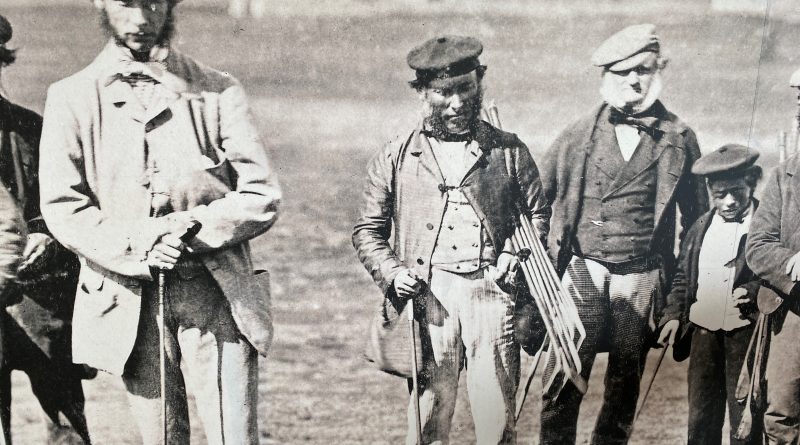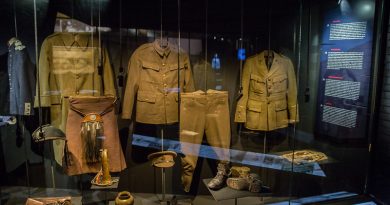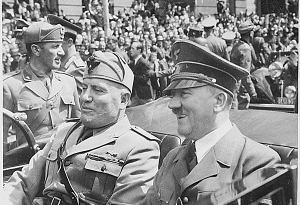Morris and Robertson: The Founders of Modern Golf
Two figures from St Andrews , Scotland, can rightly claim to be founders and chief influencers of the modern game of golf .
Old Tom Morris, also known as The Grand Old Man of Golf,was born and died in St Andrews, Fife, the “home of golf” and location of the St Andrews Links, which he helped design .
He was apprenticed to Alan Robertson , also from St Andrews , widely regarded as the world ‘s first professional golfer .
Morris worked as a greenkeeper, clubmaker, ballmaker, golf instructor, and course designer, as well as playing match and tournament golf. He came second in the first Open Championship in 1860, and won the following year. He followed this up with further victories in 1862, 1864 and 1867. He still holds the record as the oldest winner of The Open Championship at 46. Also, he was part of the only father/son couple being winner and runner-up.
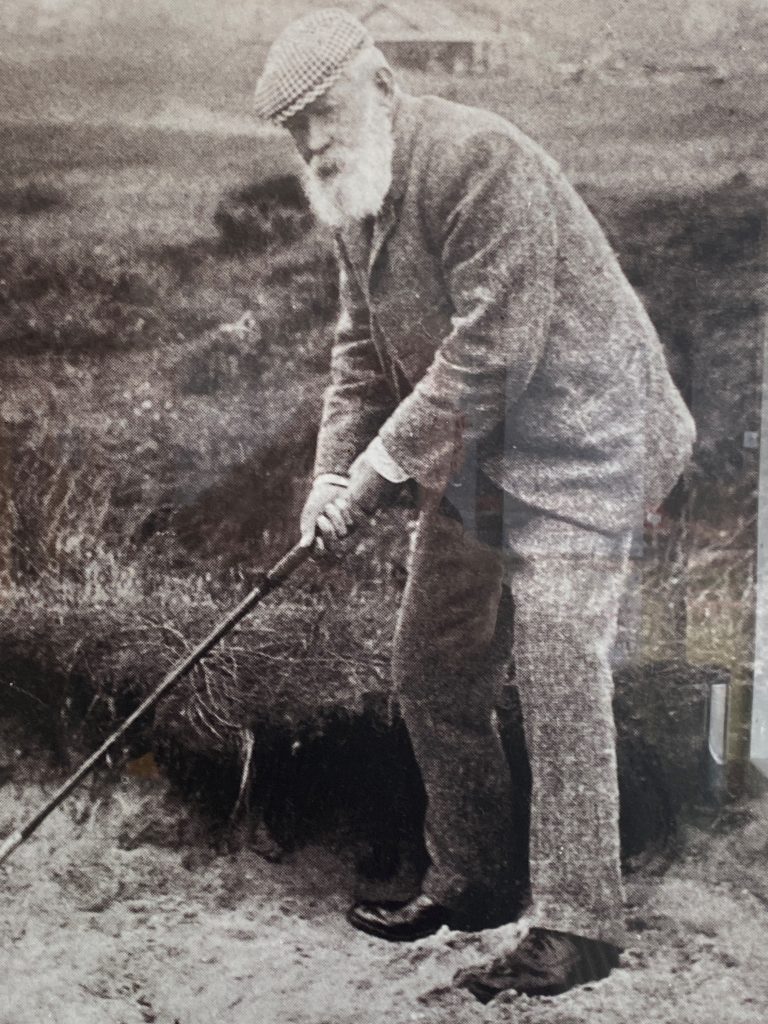
Morris held the record for the largest margin of victory in a major championship (13 strokes in the 1862 Open Championship), which stood until Tiger Woods won the 2000 US Open by 15 strokes. He became the second player to break 80 over the Old Course, scoring 79;
Once his son Young Tom Morris became an accomplished player in his own right by his mid-teens, in the mid-1860s, father and son formed a team for challenge matches, usually played by alternate shot (foursomes play), where they proved very successful. Their partnership, although not exclusive, would continue until the death of Young Tom in 1875.
In the mid-19th century golf was played mainly by well-off gentlemen, as hand-crafted clubs and balls were expensive. Professionals made a living from playing for bets, caddying, ball and club making, and instruction.
Robertson was the most famous of these pros. Tradition has it that Robertson himself was never beaten as an individual when playing for money. He sometimes played at less than his ability in order to minimize the odds he had to give to opponents. Robertson is generally regarded as being the best golfer from 1843 onwards,even after the arrival of Morris and Willie Park .Robertson was the first to score below 80 on the Old Course at St Andrews, which he did the year before his death, playing a guttie ball.
Robertson was considered the premier ball and club maker of the time, and exported his merchandise all over the world. It was a lucrative trade with an ever-increasing market. The business was originally set up by his grandfather, who passed it down to his son before Robertson himself finally inherited it. Today a Robertson ball carrying his stamp “Allan” is highly prized by collectors.
Old Tom Morris worked from 1839, when he was 18, as an apprentice in Robertson’s shop, and it is said that the two were never beaten when playing as partners. Morris defeated Robertson for the first time in a friendly match in 1843, winning a jacket, but the two generally did not compete head-to-head for stakes. Robertson, as the acknowledged best player, could refuse any challenge according to the custom of the time, and said he preferred Morris as his playing partner; Morris was in an awkward position with respect to individual playing reputations, since he worked for Robertson, who eventually fired him after a disagreement over equipment. However, for many years before that, Robertson and Morris had a lucrative playing
However, for many years before that, Robertson and Morris had a lucrative playing partnership.
Robertson significantly improved the Old Course by enlarging its greens, to allow for the increase in golf popularity. The out-and-back flow of play over a narrow strand of fairway at the Old Course eventually led to the establishment of huge double greens, virtually unique in Scotland; these have occasionally been imitated in modern golf design. Robertson’s first golf course design work, in which he was assisted by Morris, was at Carnoustie in 1842, when the two laid out ten new holes. Carnoustie gradually evolved into one of the world’s best courses.
The relationship between Robertson and Morris soured when the guttie ball was introduced. Robertson learned that Morris had played with a guttie. Robertson attempted to suppress the popularity of the new and cheaper ball, which hastened the end of the Robertson 200-year old family business making featherie balls. Morris accepted the march of progress and felt obliged to leave Robertson and set up his own workshop. Morris moved to Prestwick in 1851, on the west coast of Scotland, to build a new golf course, where he served as professional and greenkeeper. The guttie ball revolutionized golf and Robertson’s featherie business did indeed collapse, although Robertson quickly moved to manufacture the guttie, which was made from liquid rubber (gutta percha) found in Malaysia.
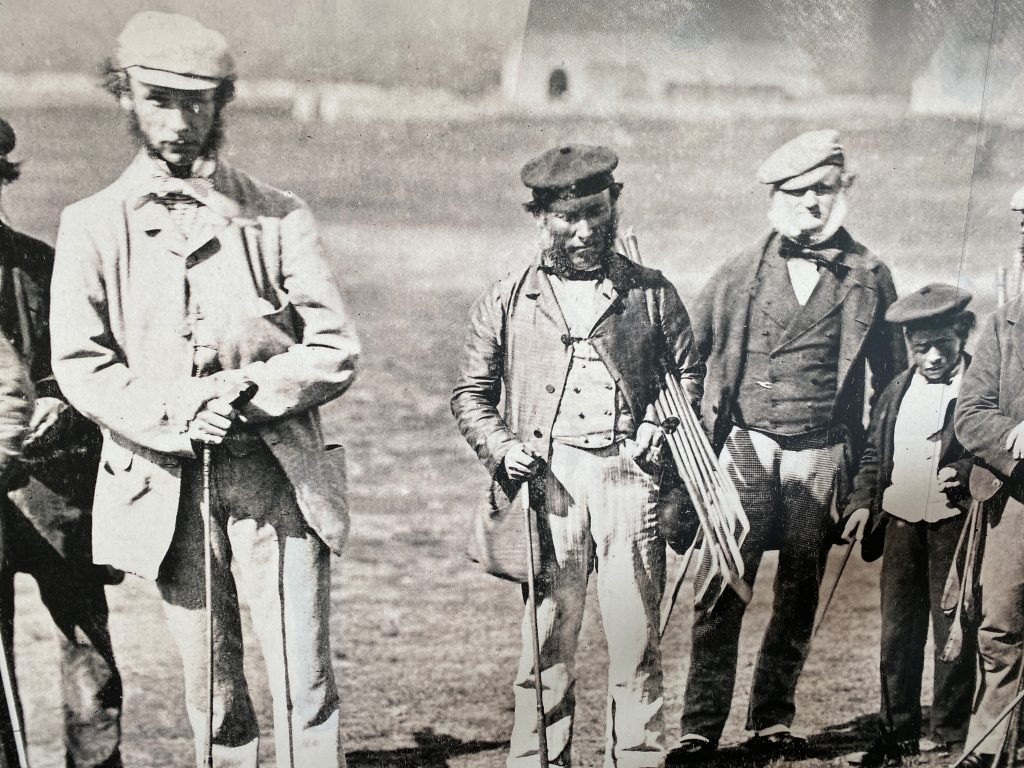
Morris played a role in designing courses across the British Isles. He had begun by assisting Robertson at Carnoustie . Thirty years later ,In 1871, he visited Forfar, in Scotland, where he created the first golf course in the world that was originally designed with 18 holes, the Forfar Golf Club. His subsequent work included the famous courses at , Prestwick, Muirfield, Machrihanish, the Jubilee Course at St Andrews, and Balcomie at Crail.
In Ireland he designed the magnificent courses at Lahinch and Rosapenna .
Morris was also the father of modern greenkeeping. He introduced the concept of top-dressing greens with sand, which significantly helped turf growth. He introduced many novel ideas on turf and course management, including actively managing hazards (in the past, bunkers and the like were largely left to their own devices, becoming truly “hazardous”) and yardage markers. He was the first to use a push mower to cut greens. He improved play at St Andrews by widening fairways to handle increased play, improving greens, and establishing separate teeing areas on each hole; all of these measures spread out play over larger areas, and led to better turf conditions. He created a new first green on the Old Course, and was responsible for the initial design of the New Course 1895 and Jubilee course in 1897. He also introduced the modern idea of placing hazards so that the golf ball could be routed around them; this was the beginning of strategic design, which has dominated golf course design ever since. Before his time hazards were thought of as obstacles that either had to be carried or were there to punish a wayward ball.
When he was 77 he was nearly beaten by Rhona Adair at St Andrews Links. Adair was one of the leading women players. He is quoted as having said: “I’ll no’ be licked by a lassie”.
Both Morris and Robertson are buried in to graveyard of the ruined St Andrews Cathedral.

